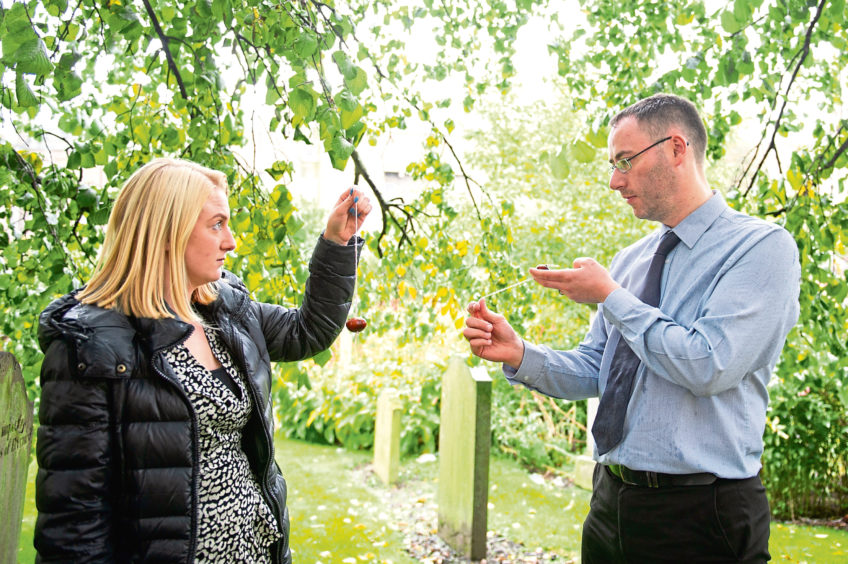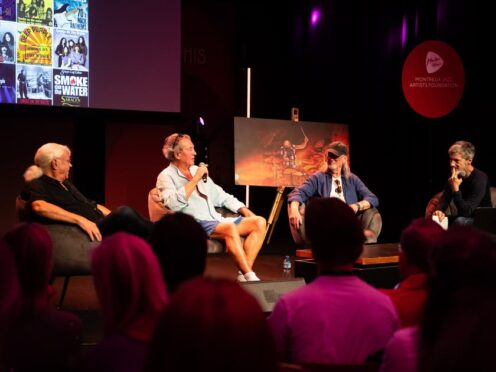Horse chestnut trees, whose conkers have been collected and treasured by generations of children, are among scores of European trees at risk of extinction.
The latest assessment from the International Union for Conservation of Nature (IUCN) Red List also reveals three species of whitebeam recently discovered in Somerset are critically endangered at a European level.
The European Red List of trees, which covers all 454 species of native trees, found more than two-fifths – 168 species – are under threat of dying out in Europe.
More than half (58%) of the trees that are endemic – which are only found in Europe – are under threat, the assessment shows.
Craig Hilton-Taylor, head of the IUCN Red List Unit, said: “It is alarming that over half of Europe’s endemic tree species are now threatened with extinction.
“Trees are essential for life on Earth, and European trees in all their diversity are a source of food and shelter for countless animal species such as birds and squirrels, and play a key economic role.
“From the EU to regional assemblies and the conservation community, we all need to work together to ensure their survival.”
Horse chestnuts have been assessed as “vulnerable” to extinction in Europe, the highest level of threat after critically endangered and endangered, following declines caused by the leaf-miner moth.
The moth is an invasive species whose caterpillars feed inside and damage the tree leaves and which originated in isolated mountains of the Balkans before spreading throughout Europe.
Though horse chestnuts are widespread across Europe, they are naturally only native to Bulgaria, Greece, Albania and the Republic of North Macedonia.
National assessments have found the species is endangered in Bulgaria and Greece and critically endangered in Albania, with the leaf-miner moth adding to pressures from logging, forest fires and tourism.
In the UK, three whitebeams only discovered 10 years ago in Cheddar Gorge in Somerset – the Cheddar whitebeam, Twin cliffs whitebeam and Gough’s Rock whitebeam – have all been assessed as critically endangered.
They are part of the “Sorbus” genus which is particularly at risk, with three-quarters of European species under threat, the study shows.
Analysis found more than a fifth of land molluscs, such as snails, and bryophytes – plants such as mosses, liverworts and hornworts – are under threat.
So too are almost half of shrubs, the new assessments found, warning the primary threats to overlooked species are loss and destruction of Europe’s wild areas, agriculture, invasive species, and climate change.
There’s still time to enjoy the fun
Conkers are a childhood rite of passage, writes Graham Huband.
Or, they certainly were.
But with the advent of PlayStations, Xboxes and myriad other distractions, the simple pleasure of conkers seems to have lost its lustre.
And now with a threat to horse chestnut trees, the game could be in terminal decline.
But there’s still time to enjoy the fun.
Get out, collect a few spiky green conker shells and assemble a kit of knitting needle and a more appropriate threading material than the loose wool we found lying around the office.
If you are sneaky, do it weeks in advance and dry your conker out.
A good soaking in vinegar will also add to a prime conker’s battle hardiness.
Then to war. Emma, a conkers virgin, took aim and failed to fire.
It proved to be a temporary blip as the old war horse was quickly vanquished as Emma quickly got her eye in.
It was a victory. But if conkers is lost to kids for good, it will be a hollow one.
A lot to be said for good, clean fun
I spent many happy autumn hours as a child hunting for conkers under horse chestnut trees, writes Emma Crichton.
They never made it on to a bit of string for a game, due to my parents’ entirely rational fear of my brothers and I “having someone’s eye out”.
All that changed yesterday and beginner’s luck prevailed.
In an era of social media, limitless wifi and endless technology, there is a lot to be said for good, clean fun.
Office chat about playing conkers sparked feelings of nostalgia, reminiscing, and debate about the best way to harden a chestnut.
It would be a shame to see a game that brought so much fun to so many resigned to the history books.
This weekend, why not prise your children, grandchildren, nieces and nephews away from their tablets and take them to the nearest park to hunt for chestnuts?
If they have as much fun as I did yesterday, it will be a day well spent and hopefully revive a dying childhood rite of passage.










